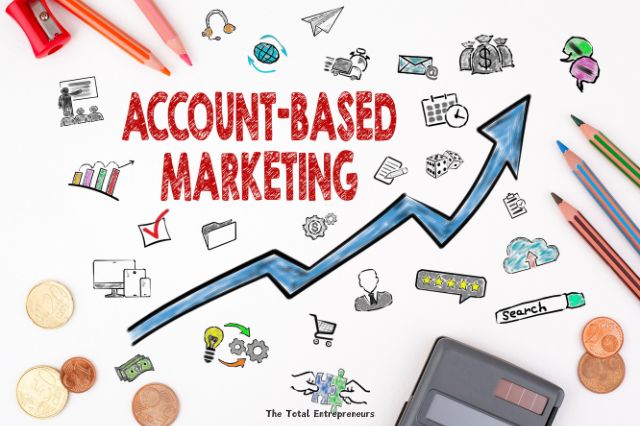Maximizing SaaS Success with Account-Based Marketing (ABM)

Account-based marketing is a highly targeted, personalized marketing approach that prioritizes individual accounts over a broader market.
Unlike traditional marketing, which targets a wide audience, ABM focuses on identifying high-value accounts and creating customized campaigns to engage and convert them. This strategic adjustment is vital for SaaS companies due to their complex sales cycles and the high demand for customized solutions.
Why Is ABM Significant for SaaS Companies?
ABM is crucial for SaaS companies for several reasons, including:
- Personalized Customer Experience: ABM enables SaaS companies to offer highly personalized content and solutions that directly address the pain points of individual accounts. Such an approach not only captures the attention of key decision-makers but also builds stronger relationships.
- Higher Conversion Rates: With ABM, the focus is on quality over quantity. Focusing on a narrower, more qualified audience allows SaaS companies to see much higher conversion rates than they would with traditional marketing methods.
- Better Alignment Between Sales and Marketing: ABM fosters a closer alignment between sales and marketing teams, ensuring that both are working towards the same goals with clear communication. This kind of collaboration leads to more effective strategies and improved outcomes.
- Enhanced ROI: SaaS companies can maximize their marketing budgets, resulting in a more efficient use of resources and a higher return on investment by concentrating resources on high-value accounts.
Steps to Implement ABM for SaaS Companies
Here are some key steps to follow for achieving optimal success with ABM in your SaaS business.
1. Identify Target Accounts
Remember, sales teams have direct interactions with prospects and customers. They can offer key insights into identifying ideal accounts. Use their expertise to enhance and refine your target account list.
You must identify accounts based on their size, revenue potential, and budget. Larger companies or those with substantial budgets may offer higher growth opportunities. Target accounts within industries or market segments that align with your product or service. Certain sectors may be more in need of your solutions.
Consider accounts with which you already have some level of engagement or past interactions. These can be easier to convert compared to entirely new prospects.
Use customer relationship management (CRM) systems and analytics tools to gather data on potential accounts. Analyze past customer data to identify patterns and characteristics of high-value accounts.
2. Develop Buyer Personas
Buyer personas are detailed profiles that represent the key decision-makers and influencers within your target accounts.
You can make a start by examining data from your CRM, sales interactions, and customer feedback to identify common characteristics and patterns among your current and past customers. Reach out to existing customers, prospects, and industry experts to gather qualitative insights. Interviews and surveys can provide a deeper understanding of their roles, challenges, and preferences.
Determine who makes the purchasing decisions within your target accounts. This might include roles such as Chief Information Officers, Chief Technology Officers, or Heads of IT. You must also recognize other key players who impact the decision-making process. These could be team leads, department heads, or consultants who provide recommendations.
Collect important details such as age, gender, education, and career history. Outline the persona’s job title, role within the company, decision-making authority, and daily responsibilities. Understanding their role helps in crafting relevant content and solutions.
Determine the specific challenges and pain points that the persona faces. For SaaS companies, this could involve issues related to software functionality, integration, or user experience. Understand what the persona aims to achieve and how your SaaS solution can address their needs. Align your messaging with their goals to demonstrate how your product can provide value.
Develop comprehensive profiles for each persona, including their background, role, pain points, goals, and preferred communication channels. It should offer a complete picture of their identity and requirements.
3. Create Customized Content and Campaigns
You need to make sure that you craft messages that address the unique challenges and goals of each target account. Use insights from your buyer personas to ensure the content resonates with the specific needs and pain points of the account.
Design marketing campaigns that are focused on individual accounts rather than broad audiences. This could involve targeted email campaigns, personalized landing pages, and bespoke offers tailored to each account’s needs.
Utilize a mix of channels like email, social media, and webinars to connect with your target accounts. Ensure that each channel delivers a consistent, personalized message.
Send personalized emails that address specific issues or opportunities for the account. Include references to previous interactions, tailored recommendations, and unique value propositions.
Create landing pages customized for each target account, featuring content relevant to their interests and needs. This could be personalized offers, product demos, or interactive elements.
Host webinars or events specifically for target accounts, focusing on topics that are highly relevant to their industry or challenges. Invite key decision-makers and provide them with valuable, account-specific insights.
Use marketing automation tools to deliver personalized content at scale. Set up automated workflows that send tailored messages and offers based on account behavior and engagement. Monitor how target accounts interact with your automated campaigns. Use this data to refine your content strategy and optimize future campaigns.
4. Leverage Data and Analytics
Predictive models can help estimate the likelihood of conversion based on historical data and account behavior. Use predictive insights to prioritize accounts that are more likely to convert or have the highest potential value. Focus your resources and efforts on these high-priority accounts for better results.
You can create highly personalized content and campaigns by using data insights. If data shows that a particular account is interested in a specific feature, highlight that feature in your marketing materials.
Based on performance data, make data-driven adjustments to your ABM tactics. For example, if a certain type of content is not resonating with your target accounts, try different formats or messaging. Continuously refine your account targeting based on new data and insights. Update your target account list and personalization strategies as needed to stay aligned with your goals.
Final Thoughts
Account-based marketing is a highly effective approach that can fuel substantial growth for SaaS companies. However, for ABM to succeed, your sales and marketing teams must be in sync. Regular communication, shared goals, and collaboration on account plans are essential to ensure that both teams are working together towards the same objectives.
Continuous measurement and optimization are key to ABM’s success. Use metrics such as account engagement, pipeline velocity, and revenue growth to assess the effectiveness of your ABM strategy. Regularly review these metrics and adjust your approach to maximize results.
The post Maximizing SaaS Success with Account-Based Marketing (ABM) appeared first on The Total Entrepreneurs.
If you re eager to discover more about how we can elevate your digital presence, don t hesitate to explore our full range of services. Click on the link below to delve into a world of tailored strategies, innovative solutions, and a dedicated team ready to amplify your online impact. Your digital success story starts here.
Explore Our Services





